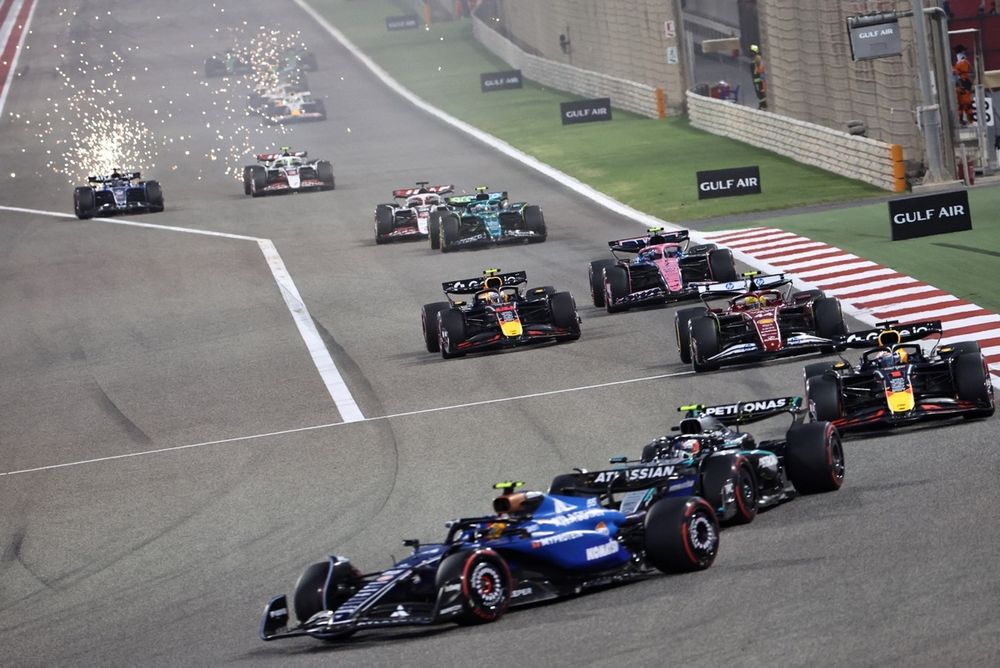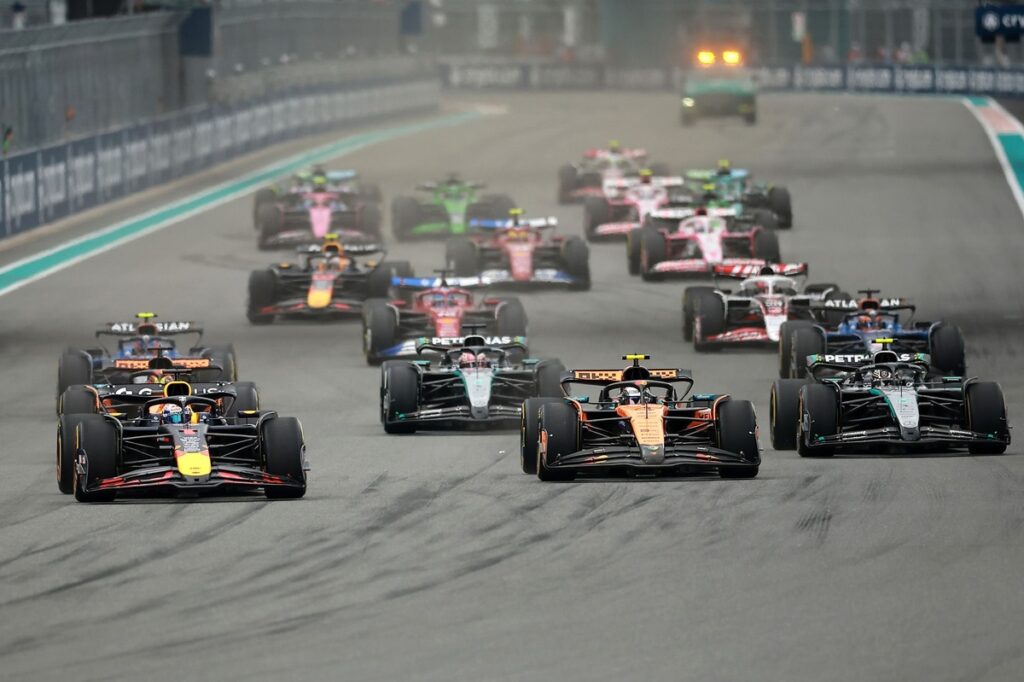75 years ago this week, when Giuseppe Farina roared across the finishing line to win the first world championship grand prix at Silverstone, he did so in an Alfa Romeo 158 weighing – depending on fluids and which sources you use – between 650 and 700kg. When F1 adopted a minimum weight for the first time in 1961 the figure was set at 450kg.
Under the most recent ruleset, teams have been struggling – note the amount of unpainted carbon fibre on display – to hit the current minimum of 800kg. On the face of it, not a fantastic advert for three-quarters of a century of scientific progress.
Obviously the figure of 800kg now includes the driver but even when viewed through a more rigorous prism, which involves going back to 1995 when the car and driver weight was first combined, the resulting figure makes for an ugly comparison: 595kg.
The difference is 205kg. In the past three decades only the price of Oasis gig tickets has inflated more egregiously.
“We’d all like the cars to be a lot lighter,” FIA single-seater director Nikolas Tombazis told Autosport. “Some of the solutions being mooted [in terms of future powertrains] would lead to significantly lighter cars, which is what everyone would like.
“It’s a trade-off between financials, technological freedom and how cutting-edge Formula 1 is, environmental considerations, and excitement.”
Around 100kg of the weight gain came as a result of adopting hybrid powertrains. The current minimum weight for a hybrid power unit is 151kg – compare that with, say, a late 1990s 3-litre V10 which weighed between 90kg and 100kg.
Nikolas Tombazis, FIA Single Seater Director
Photo by: Andy Hone / Motorsport Images
While the PU minimum weight of 151kg includes the hybrid system, it doesn’t include the turbocharging mechanism or, more significantly, the cooling system, which is vastly more complex than the plumbing required by a 1990s engine. The days of having two simple radiators handling the majority of heat management are long gone.
Around 50kg of additional weight can be accounted for by safety features such as stronger side-impact structures and the halo. Clever engineering and design can mitigate the effects of having to resist a stricter crash-testing regime but, to an extent, with additional strength comes weight.
Given the growing list of likely injuries averted by modern safety features, this is not an element anyone sensible in F1 would wish to row back on.
The remaining 55kg or so of bloat is accounted for by a mix of elements, some of which it could be possible to reset. When former F1 ‘ringmaster’ Bernie Ecclestone rolled out of the wrong side of bed early in 2015 and declared the cars should be wider and more aggressive-looking, he did this sporting category a great disservice because the inevitable result was additional weight and made greater difficulty in overtaking.
Wider, bigger-diameter wheels have also had an effect – one being mitigated slightly for next year since the front wheels will be 25mm narrower, the rears 30mm. Not a massive amount but, again, there are performance considerations.
One change which would be politically difficult to execute, but could reduce car weight, is to reduce aerodynamic and mechanical complexity.
“We can go towards negating some of the dimensional aspects of cars, but it has to be possible to come back to a car that is simpler than it is now,” said Tombazis.

Race start
Photo by: Fadel Senna – AFP – Getty Images
“And that is an interesting philosophical issue: why cars nowadays are a lot more complicated. The reason people design more complicated cars is because they have ‘near-perfect’ simulation capability.
“Take the cooling system, for example: cars in the past used to have an entry duct and a radiator. And then the air after the radiator would find its way out through the bodywork and eventually go out of the back. Nowadays, there’s an entry duct, a radiator, and an exit duct, all fully profiled with little winglets and turning vanes.
“As another example, the front floor now has a damper and a full system to operate at exactly the regulatory limits of deflection.
“So, there are many performance-increasing features on cars, all incremental, that make the car much more complicated – and heavier.”
It is famously difficult to return a genie to the bottle. No F1 team would give up an area of performance gain without a fight.
And this is where the battle lines are forming ahead of the 2026 season, as senior engineers have been openly questioning whether the relatively modest 30kg weight cut planned for the new ruleset is even possible. It might – or should – be. And more would be better.
But if the trend towards weight gain is to be meaningfully reversed, teams are going to have to give up some long-cherished performance features.
In this article
Be the first to know and subscribe for real-time news email updates on these topics
Subscribe to news alerts
Read the full article here

